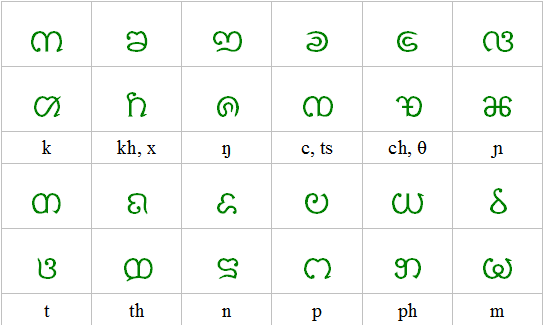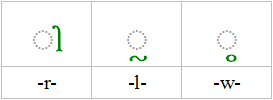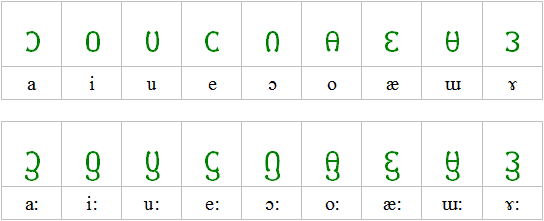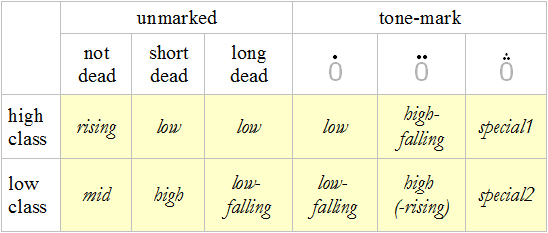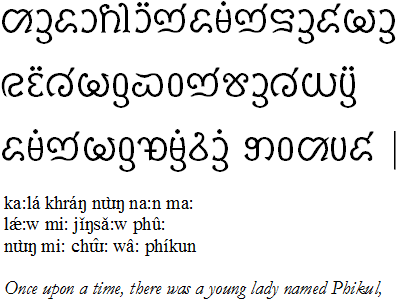This Tai Anphabet is based on the previous edition, and extends it by doubling the number of consonants. It is designed to write languages of the Tai family, especially Thai and Lanna. It puts all letters in a single channel, and simplifies the vowel system. The main difference from the 5th edition is the use of a class system to simplify the writing of tones. It therefore ends up with a solution not far removed from that of the New Tai Lue script (this became apparent after most of the design was complete).
Consonants
Each consonant of the 5ed alphabet becomes high class, and is paired up with a new low-class consonant. The high-low nomenclature simply copies that of other Tai script systems; the rationale for this doubling-up is explained below. In the chart the upper set is high-class, the lower set low-class consonants. All letter-forms are derived from existing Tai glyphs, whether Lanna, Tai Lue, Shan, Tai Dam, etc, or from the root script, Pallava.
If a syllable ends with a stop, it is called a dead syllable. Syllables may otherwise end with a vowel or nasal. The following are the consonantal finals, being high-class and marked with a tick at the top right:
For the medial semivowels found in Tai clusters, namely /r/, /l/ and /w/, there are special letters/subscripts:
Vowels
The vowels remain unchanged from the previous edition. Long vowels have a tail below. Short final vowels will have an inherent glottal stop.
Broadening diphthongs have their own letter; narrowing diphthongs and triphthongs are formed with a suffix.
Tones
The tone of a syllable is determined by the combination of initial consonant class plus syllable shape plus any tone marking. There are thus Rules, which may be tabled like this:
This is actually very similar to the Standard Thai tone system. The main difference in this particular rendition is the separation of two kinds of falling and rising tones, found in many dialects. There are also two “special” tone marks for odd situations, such as marking the high-class short-dead rising tone of Lanna and Isan, etc. Tone marks (one, two or three dots) go upon the vowel.
The beauty of the traditional Tone Rule system is that dialects may be written without change, since each dialect’s Rules describe the same tone markings in a unique but consistent manner. Another motivation behind this change from the 5th edition’s tone marking was to allow many predictable syllabic types to go unmarked.

